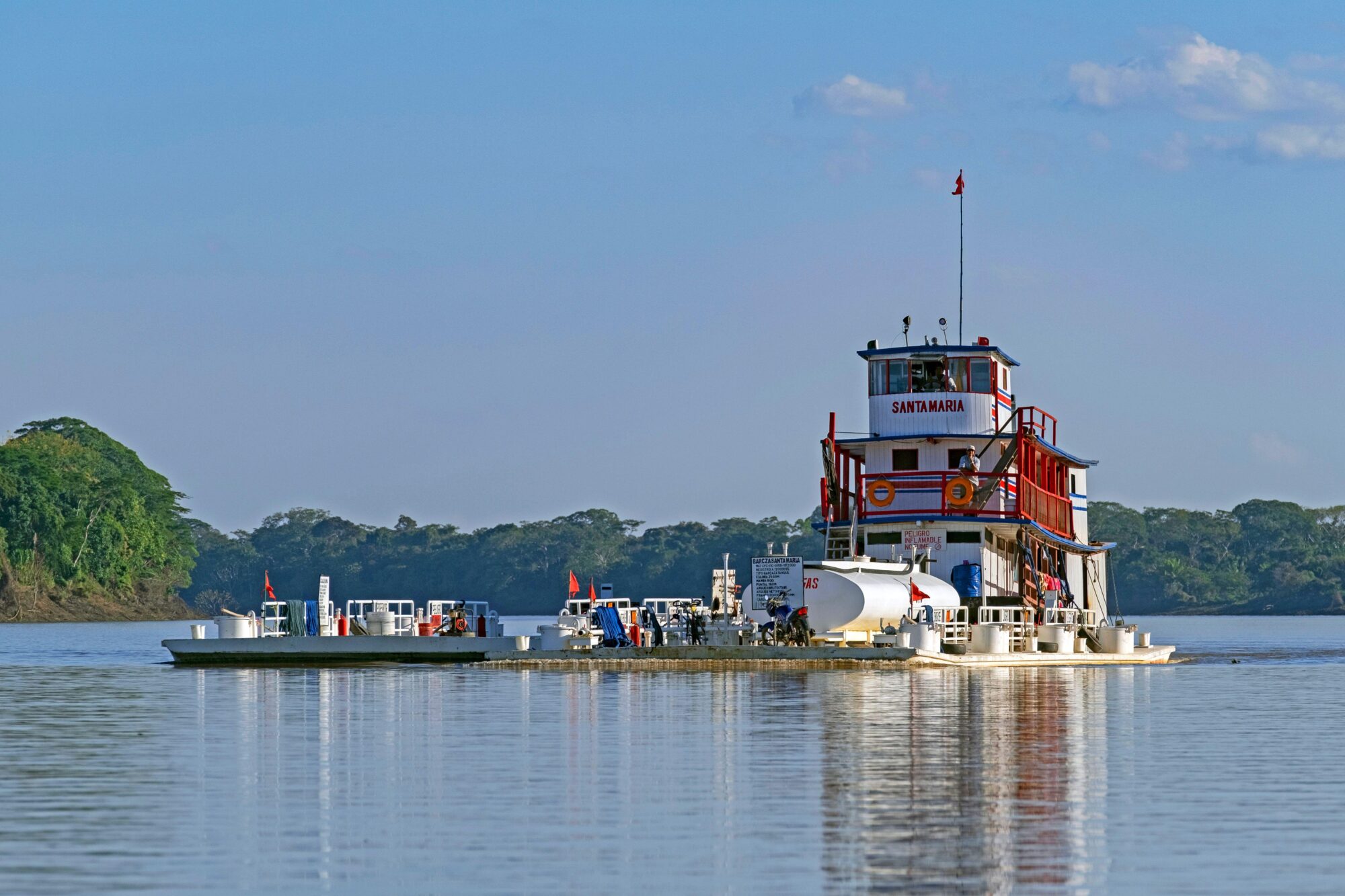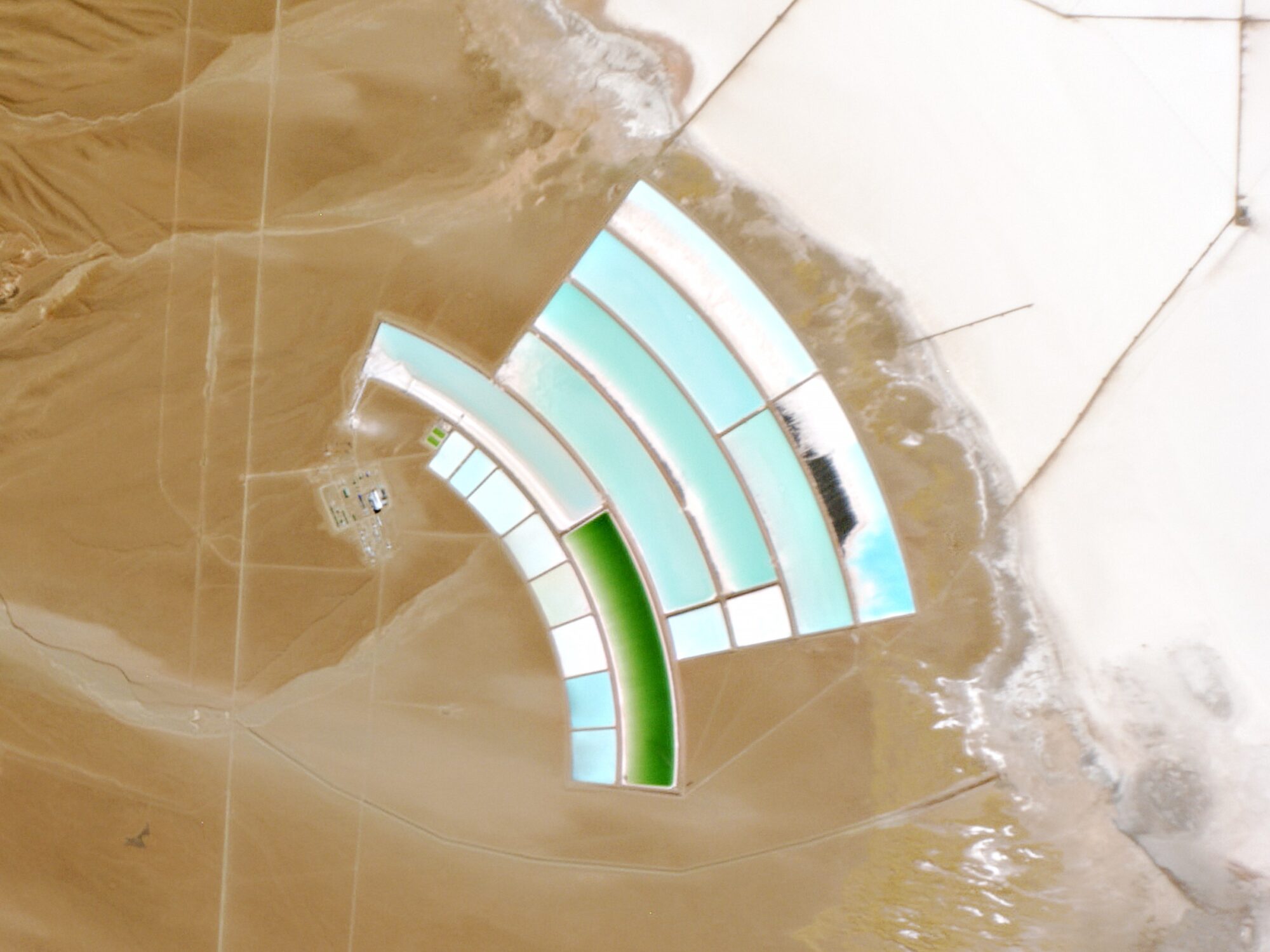At the beginning of the War of the Pacific (1879–1884), Bolivia lost its access to the sea. Borders were redrawn and Bolivia’s previous route to the coast fell into Chile’s hands, reducing the now-landlocked nation’s capacity to trade with the rest of the world. In the intervening 142 years, Bolivia has made various attempts to recover its maritime sovereignty and access the Pacific Ocean via Chile or Peru, but without much luck.
As a result, Bolivia has begun to look to the Atlantic with fresh eyes with a new venture: the Ichilo-Mamoré waterway, which Bolivian president Luis Arce formally inaugurated on 5 July. The project, the government says, will improve the passage for larger cargo ships along Bolivia’s Ichilo and Mamoré rivers, the latter of which flows into neighbouring Brazil, where it connects with other waterways that eventually reach the ocean.

The 1400-kilometre-long infrastructure project starts on a section of the Ichilo river in the Cochabamba department, central Bolivia, and continues along the Mamoré, which flows into the Amazonian region of Beni in the country’s north, on the border with Brazil.
Yet, the Ichilo-Mamoré waterway is not an entirely new project. Efforts to develop the rivers began as early as the 1970s, supported by a cooperation with the Belgian government’s development agency, and the waterway operated relatively regularly until the early 2000s. The project also included the Beni River, which flows north through western Bolivia to meet the Mamoré, with the routes used for domestic transport of fuel and food to remote areas that had no other connections. However, the construction of a road linking the departments of Santa Cruz and Beni in 2001 meant that the waterway ceased to be useful for surrounding populations and shipping companies.
Both natural and social scientists, however, are concerned that the new Ichilo-Mamoré proposal may not be the best choice for a project that brings sustainable and equitable development. They cite some inappropriate hydrological conditions and increased flood risks for riverside communities, along with the need for an environmental impact assessment if the project is to advance.
The opportunity for Bolivia’s waterways
The Federation of Business Entities of Cochabamba (FEPC) proposed improvements to the Ichilo-Mamoré waterway as a more advantageous route for exporting products to Europe than the one currently used via permits at the Chilean port of Arica, and passing through the Panama Canal to the Atlantic.
At present, goods leaving Cochabamba for Lisbon, for example, travel 12,105 kilometres in 40 days along this route. Goods would reach the same destination in just 28 days travelling along the Ichilo-Mamoré waterway and using existing Brazilian channels. The total length of the journey would be 9,971 kilometres, some 2,300 kilometres fewer.
$1billion
The annual savings in terms of operational export costs that the waterway is estimated to provide (US$)
If it becomes fully operational, the waterway would generate savings of up to 25% in operational export costs, equivalent to US$1 billion dollars per year, according to information provided by the Federation of Private Businessmen of Beni (FEPB). A 2005 study by the Amazon Navigation Improvement Service (Semena) estimated that the revival of the Ichilo-Mamoré waterway would require more than US$100 million.
Bolivia has now begun to raise the necessary funds. In the current, first stage, the Ministry of Public Works (MOPSV) has budgeted a little over US$800,000 for cleaning the waterway, the construction of complementary areas such as warehouses, and for port protection and works supervision. The second phase aims to improve its infrastructure, including signage, road connections, and port platforms at Puerto Villarroel in Cochabamba, where the waterway begins. A third stage seeks to ensure the waterway’s sustainability.

Édgar Montaño, the public works minister, announced in July that the second phase of the project would be financed by international institutions. “There is interest in the Ichilo-Mamoré waterway. The financing has been proposed to us by the CAF [Development Bank of Latin America] and the Inter-American Development Bank. And it’s not only European countries among those interested in the construction, but also China,” Montaño said, in comments reported by Bolivian news service Agencia ABI.
China’s interest in reactivating the waterway complements Bolivian businesses’ desire to export more products to the world’s largest consumer market under better conditions. In statements reported by national newspaper Los Tiempos, the president of the Cochabamba Chamber of Industry, Commerce and Services (ICAM), said that shipments of goods to China would be quicker through Ichilo-Mamoré, generating a time saving of 25%, which in practice would mean 13 days saved, from an average of 45 to 32 days.
Bolivia’s waterway undergoes revival
At the inauguration of Bolivia’s Ichilo-Mamoré waterway, a boat carrying 60 tonnes of cement travelled to the northern town of Guayaramerín, on the border with Brazil in Beni department, in a symbolic first voyage.

A week later, Montaño published an article in the newspaper La Razón, celebrating the launch. “We can export our products to European and Asian markets,” said the minister, who hopes to see expedited shipments of bananas, pineapples, citrus fruits, timber, meat and soy.
Despite the government’s encouragement, the waterway still does not meet the required conditions for exporting products, according to Javier Bellott, a Bolivian mining executive who was a key advocate for the reactivation of Ichilo-Mamoré when he was president of FEPC.
A waterway has a lower impact than a road – but more than a railway
Bellott points out that his company cannot send cargo along the route because the ports do not have the necessary stowage logistics for loading and unloading. “The government has to invest or offer the works via a concession, and it has to do it now,” he told Diálogo Chino.
Commercial advantages
The Ichilo-Mamoré waterway serves as an alternative connection for Bolivia with the Atlantic Ocean, which would give cargo from the departments of Cochabamba, Beni and Pando easier access, according to the Bolivian Institute of Foreign Trade (IBCE). The main exportable products from these regions are foodstuffs and manufactured goods, IBCE says. The route also offers the possibility of importing inputs to boost production in these departments.
The Atlantic exit would connect Bolivia more efficiently with European countries, including the UK, Spain, France and Germany, which currently have the greatest trade flows with Bolivian suppliers. “At the same time, it connects with some US states such as New York and Florida,” Jimena León, head of statistics at the IBCE, told Diálogo Chino.
Bolivia has a trade deficit with Asia, and its exchanges with China largely explain this. “Specifically via the Atlantic, Bolivia exported a value of US$55 million to the Asian market between 2016 and August 2021, while imports in the same period amounted to US$666 million,” León said.
Bolivia’s current connection with the Atlantic is via the Paraguay-Paraná waterway. However, this waterway is currently inoperable due to drought. In April 2019, the Paraguay-Paraná waterway was ready to dispatch 84 containers of Bolivian cement and timber destined for the Paraguayan and Chinese markets, but this cargo was ultimately unable to take the dried-up route. With supposedly more reliable flows, Ichilo-Mamoré could offer a more climate-resilient goods transit route to the Chinese market, but experts still have concerns.
Socio-environmental forecasts for Ichilo-Mamoré
The first Ichilo-Mamoré waterway was a project in which the Belgian government development agency invested significant economic and technical resources. Aquatic biologist Paul Andre Van Damme, who has worked in the area for decades, remembers it clearly.
Van Damme believes that the new, improved waterway will be much greater than its 1970s incarnation, in terms of navigation capacity. Today, it is essential to carry out assessments of the state of the waterway and its areas of influence and, if the project is to advance beyond the first, maintenance stage, to commission proper environmental impact studies that are capable of assessing the project’s technical feasibility.
In the absence of a socio-environmental impact study – there was no environmental legislation mandating these in the 1970s when the project was conceived – non-governmental organisations have yet to comment on the project. The indigenous peoples in the waterway’s area of influence are also waiting to learn more about the project in order to take a more informed position.
Van Damme warns that there is a stretch of the Mamoré that is not the most appropriate for a waterway. “It is a very dynamic, powerful river, with a course that is determined by a hydrological dynamic conditioned by the Andes Mountains,” he explains. The sediment of the river determines its course and continually alters it, generating new lagoons and meanders, he told Diálogo Chino.

Sociologist Sarela Paz, who has been working for three decades in the area of the waterway – the Cochabamba tropics and the Beni Amazon – agrees. She believes that if it is not too invasive, the waterway could be beneficial for the riverside population, which is made up of indigenous Amazonians and internal settlers. However, if the river were to be dredged significantly, the project could cause substantial damage.
Paz is also aware that the waterway is preferable to a road, at least in socio-environmental terms. She refers to a road between Cochabamba and Beni that was intended to cross the Isiboro Sécure National Park and Indigenous Territory, but was ultimately not built.
Van Damme agrees a waterway has a lower impact than a road – but more than a railway. Whatever the project, he says, it should have a prior impact study that, in addition to examining its technical and financial feasibility, incorporates three important assessment criteria.
The first should be the hydrological, sedimentological and geomorphological risks. This would contribute to a better understanding of the behaviour of the river and allow planned interventions. The second should calculate the impacts on fauna, flora and the functioning of the local ecology. The third should focus on a socio-economic analysis to investigate the effects of the project on the social dynamics and productive activities such as fishing, tourism and recreation.
Such a social-focused study could be vital for the Ichilo-Mamoré waterway project. This could prevent and mitigate potentially critical problems for the ecosystem, for the surrounding indigenous communities, and even for the more urbanised populations, which could be exposed to lethal flooding, a risk that is already latent in the Beni department due to the flatness of its territory.
“A detailed socio-environmental impact study is a prerequisite for moving forward, and it has to be done before the project starts, not when it is already underway or executed,” insists Van Damme.




